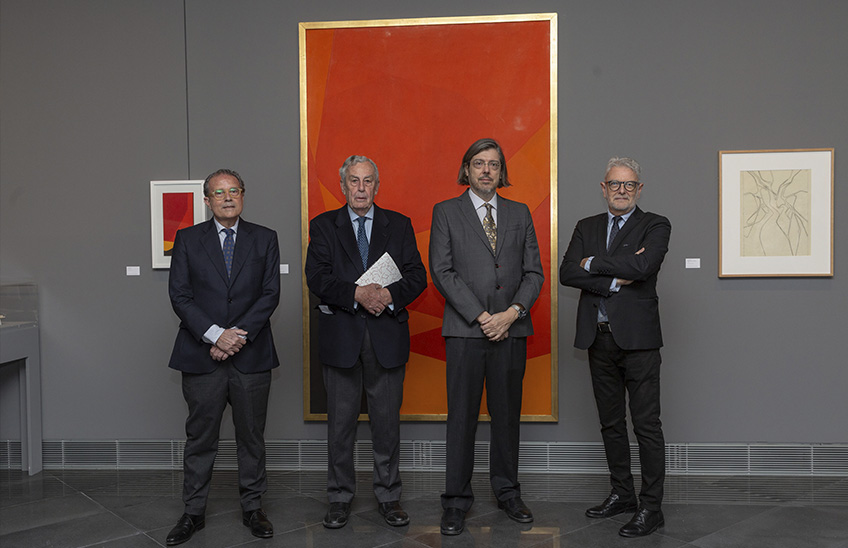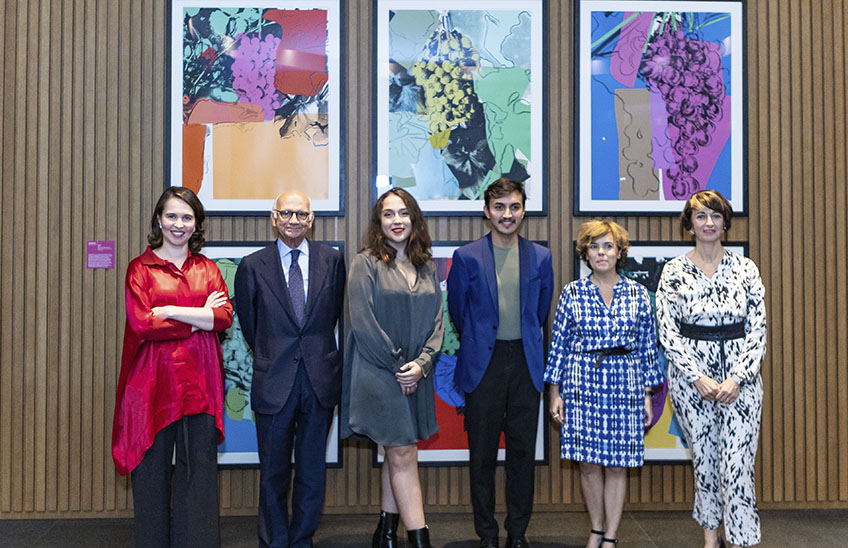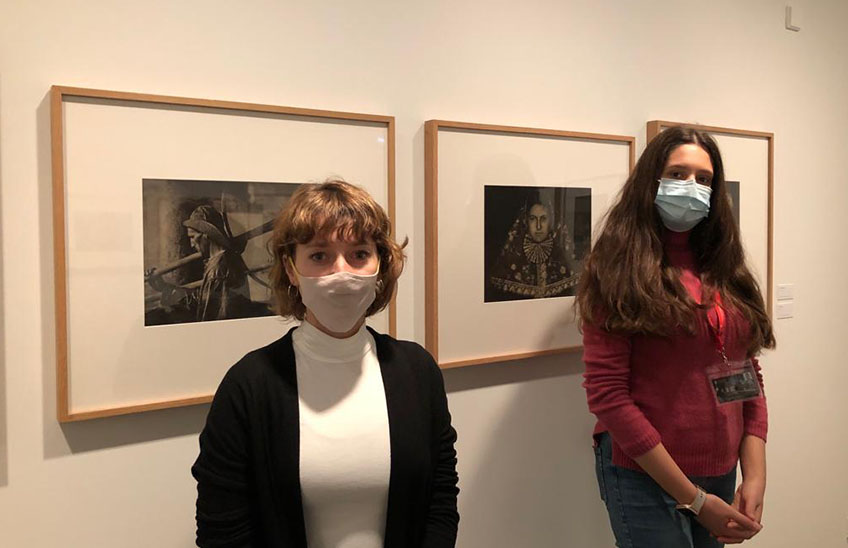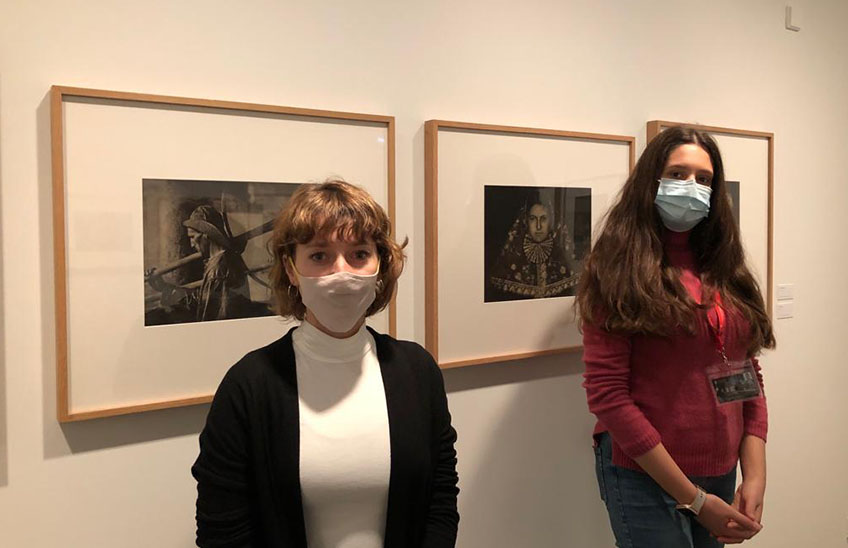Walking East. A conscious walk along the Jacobean route conveys the importance of nature
Hamish Fulton
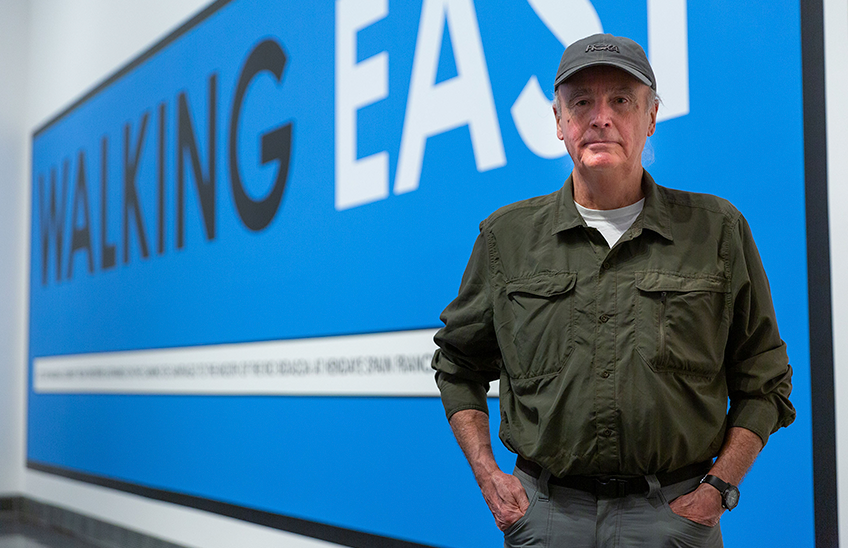
24 | 03 | 2022
The Museo Universidad de Navarra has presented to the media the exhibition Walking East. The event was attended by the English artist, Hamish Fulton, its curator, Pep Benlloch, and one of the Museum's artistic directors, Valentín Vallhonrat. Also in the audience were Santiago Olmos -director of the CGAC, Centre Galego de Arte Contemporánea, the institution co-producing sample-, Mira Bernabé - of the Madrid gallery Mira 1, the artist's representative.
The sample shows a route of the Camino starting from Finisterre, in the direction of Santiago de Compostela, and its continuation towards Pamplona and Roncesvalles, through the Pyrenees to Hendaye. In addition, works from other walks and periods of the artist's life allow us to contemplate the evolution of his artistic career and interests.
"The baseline of my vital work is to convey the importance of nature," said the artist. "The art we are going to see in this exhibition is related to two activities. The first is the physical experience of walking through different areas, including the rooms of the exhibition. The second is the materialisation of thoughts and sensations that I experienced as I walked through these areas." The artist is aware that the people who see his work do not exactly perceive the walk he reflects and it always requires the imagination of the viewer, who tries to imagine that path, to fill in its meaning.
FORMS OF REPRESENTATION
The exhibition brings together works that use a variety of forms of representation. First, large wall murals with text depict short, one-hour walks that were carried out collectively and in urban settings. These murals can be found mainly at conference room Fundación "La Caixa".
The conference room Torre has several limited edition photographic series. The first is a series of images and materials documenting high and low points in different locations in the northern and southern hemispheres. This material is much smaller in scale, capturing experiences of much larger dimensions.
The series with wooden pieces visually, briefly and specifically describe long walks and incorporate texts about the walking that gives rise to them.
In the evolution of the artist's works, from the 1970s to the present day, a purification of the mediums can be seen. After the beginnings reflected in photographs and accompanied by small descriptive texts, his work has been evolving towards the elimination of the image and focusing on words.
For Fulton, when making a exhibition, the comparison between the photograph and the text is important, allowing for new relationships. "But coexistence is something I like (...) The purpose is not to eliminate the photo and leave the text, but I wanted to compare both media. The photo defines the place very quickly and immediately. And in the murals it doesn't describe anything, we don't know what the photograph looks like, or the walk that motivated them".
THE UPSIDE DOWN WAY
Why do the route the other way round? The artist states that in the Middle Ages everyone who walked the Jacobean Route made their way from their home to Santiago and then returned, a two-way walk. Today, people decide to go to Santiago from wherever they are and return home by other means, the circle is not closed, there is no complete walk.
"I am an artist who walks, not a pilgrim" and this can be seen in the fact that the pilgrim walks staff and individually along a path that has already been laid out. The pilgrim has an enormous importance for himself and follows a path designed by all. In the case of Hamish Fulton, the selection of the "backwards" route connects points of previous walks that make sense in his work.
CONCERNS OF A WALKING ARTIST
The past of empires, Brexit, pilgrimages, migrations, refugees, individual and collective paths, ecology and the climate crisis... These are all present elements that are reflected in the work of this walking artist and are part of his concerns. For example, the maps shown in his works do not show border lines. In the artist's opinion, "borders, as a human construct, separate, isolate, take away the freedom of the walker and distance him from the unity of the landscape that he experiences when he walks".
Technology puts a filter between the person and the experience. It is very different to experience nature at first hand or to see it in a documentary film. For Fulton, all this technology could not have come about if all life forms were given importance, all these inventions only benefit human beings. "I think the past year has been incredible in terms of ecological crises on the planet," he says.
THANK YOU
"This exhibition, said Pep Benlloch, has been possible thanks to the partnership of many people and centres that have contributed, in very complicated times such as those of last year, to the realisation of this project. The curator is a mediator or companion of the artist and the collections. The constant dialogue between the institution, the curator and the artist brings the projects closer to the spectator, projects that express in a resounding way what the artist wishes to say".
The artist joined in this appreciation by holding two very different community walks yesterday, one at Campus and the other in the city. In the first, Walking in Every Direction, the artist proposed to a mostly young audience a fast walk in all directions, occupying the whole space. In the second, SLOWALK, which had the support of Pamplona City Council partnership , the participants covered 6 metres in one hour. It is through these ideas that the artist wanted to transfer the visitor's experience of the exhibition beyond the halls. "The result is always unpredictable", he says.
This is the artist's invitation to exhibition Walking East: for the visitor to stroll and become a spectator and a walker at the same time.
The sample will occupy the conference room "La Caixa" Foundation, on floor 0, and the conference room Tower of the University of Navarra Museum from 24 March until 4 September 2022. The Museum is organising various complementary activities around this exhibition .
Activities
23 MAR / 13:00H - Walking in every direction. Walking with Hamish Fulton
23 MAR / 18:00H - Slow Walk. Community walk with Hamish Fulton, with the partnership of Pamplona City Council.
24 MAR / 19:00H - Masterclass Hamish Fulton / Pep Benlloc
31 MAR / 19:00H - lecture How to do things with...the Way of St. James

